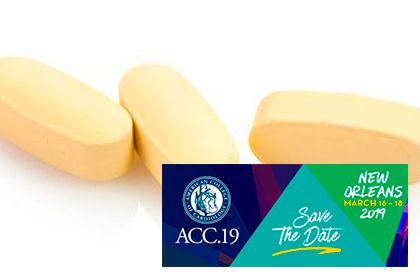Aspirin is against the ropes: first, it was primary prevention; now, its use is being reconsidered even in relation to angioplasty. There might be paradigm changes as regards antiplatelet therapy after angioplasty. These two studies presented at the American College of Cardiology (ACC) 2019 Scientific Session can really change what we have been doing unquestioningly…
ACC 2019 | SMART-CHOICE: Aspirin Increasingly “Against the Ropes”
This work (presented during the same American College of Cardiology [ACC] 2019 Scientific Session as the STOPDAPT-2 trial) enrolled 2993 patients who underwent angioplasty with current-generation stents Xience, Promus, Synergy, or Orsiro at 33 Korean sites. Patients were randomized to 12 months of dual antiplatelet therapy or dropping aspirin at 3 months. There was no difference between the short-…
ACC 2019 | AUGUSTUS: Apixaban Plus P2Y12 Inhibitor Is the Best Combination in Atrial Fibrillation and Angioplasty
Aspirin increases bleeding with no ischemic benefit, but a trend toward more stent thrombosis with placebo warrants further studies. Patients with atrial fibrillation who receive an anticoagulant agent and coronary angioplasty with a stent, and then continue with aspirin, experience an increased risk of bleeding without any ischemic benefit whatsoever. The use of a…
ACC 2019 | The New ACC/AHA Guidelines on Primary Prevention Focus on Life Style, Diet and Socioeconomic Factors.
These guidelines basically remind us that we should focus on life style changes to best prevent heart disease, heart failure and atrial fibrillation. These changes, of course, should be permanent. It is estimated that life style changes translate into 80% risk reduction of heart disease. These recommendations are based on 9 topics: risk estimation,…



